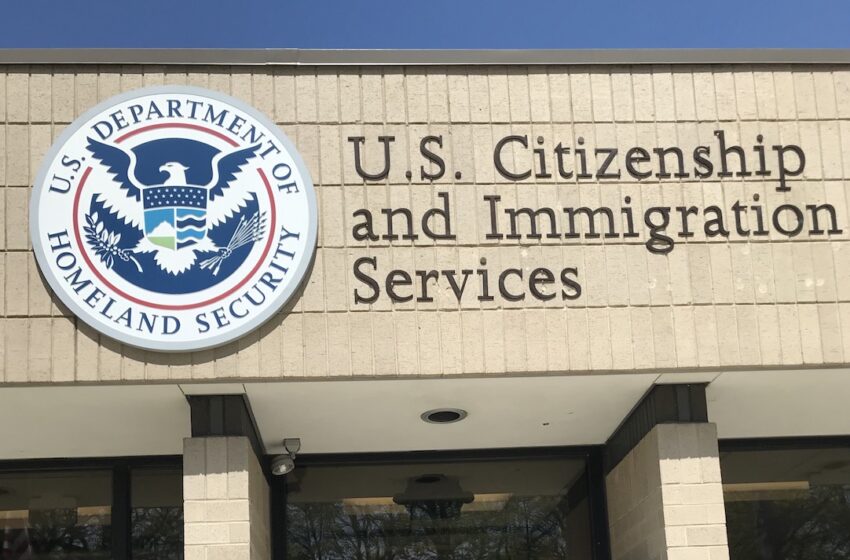USCIS raises H-1B visa and immigration fees

US Citizenship and Immigration Services (USCIS) is set to raise the fees employers pay to submit petitions for foreign workers and sponsor employees for permanent residence and a host of other services from April 1.
Under a final rule released on January 30 employers hiring high-skilled foreign nationals will pay 70% more for beneficiaries on H-1B petitions, 201% more for employees on L-1 petitions and 129% more for individuals on O-1 petitions.
H-1B petitions fee will increase from $460 to $780, L-1 petitions rise from $460 to $1,385 and O-1 petitions increase from $460 to $1,055. The USCIS website contains a complete list of the new fees.
READ: Everything you need to know about H-1B visa program (April 26, 2022)
An I-485 Application to Register Permanent Residence or Adjust Status (with biometric services) would increase from $1,225 to $1,440, a $100 less than in the proposed fee rule.
An immigrant petition by a regional center investor will increase by 204% (from $3,675 to $11,160), and a petition by an investor to remove conditions on permanent residence status will rise from $3,750 to $9,525.
In the final rule, USCIS/DHS retained the higher H-1B Electronic Registration Fee. However, employers will not pay the higher amount in 2024 because the fee rule does not take effect until April 1, 2024—after the H-1B registration process ends.
READ: New USCIS rules to check gaming of H-1B program (January 31, 2024)
The H-1B Electronic Registration Fee for each beneficiary will increase from $10, established in 2019, to $215, a 2,050% increase.
“DHS understands that an increase from $10 to $215 may appear to be exorbitant at first glance,” according to the justification for the increase in the proposed rule.
If the number of H-1B registrations were similar in a year to FY 2023, a National Foundation for American Policy analysis cited by Forbes estimated employers collectively would pay approximately an additional $100 million a year due to the higher fee.
USCIS previously operated a paper-based system for the H-1B lottery. The agency did not explain why the new $215 H-1B registration fee is needed to cover administrative costs that should be less under the electronic registration system.
READ: USCIS to launch organizational accounts for 2025 H-1B cap season (January 15, 2024)
“The electronic registration process streamlines processing by reducing paperwork and data exchange and provides overall cost savings to employers seeking to file H-1B cap-subject petitions,” according to the USCIS.
USCIS estimates it will see an additional $1.14 billion in revenue, with much of that increase falling on US employers.
USCIS retained from its proposed rule a new Asylum Program Fee of $600 paid by employers when filing a Form I-129, Petition for a Nonimmigrant Worker, or Form I-140, Immigrant Petition for Alien Worker.
In a change from the proposed rule, USCIS will exempt nonprofits from paying the Asylum Program Fee. The final rule also reduces the fee to $300 for employers with 25 or fewer full-time employees.
Fees for named beneficiaries for H-2A petitions (for agricultural workers) will rise by 137% (from $460 to $1,090) and for H-2B petitions (for seasonal, nonagricultural workers) by 135% (from $460 to $1,080). USCIS did not change these fees from the proposed rule.
Justifying the fee increase, the USCIS said the final rule will allow it to recover a greater share of its operating costs and support more timely processing of new applications.
READ: US to launch domestic H-1B renewal program in December (November 29, 2023)
“For the first time in over seven years, USCIS is updating our fees to better meet the needs of our agency, enabling us to provide more timely decisions to those we serve,” said USCIS Director Ur M. Jaddou.
“Despite years of inadequate funding, the USCIS workforce has made great strides in customer service, backlog reduction, implementing new processes and programs, and upholding fairness, integrity, and respect for all we serve.”
USCIS encouraged stakeholders to visit the Frequently Asked Questions page on its website to view a full list of the revised forms that will go into effect on April 1, 2024, along with the new fees.
USCIS will accept prior editions of most forms during a grace period from April 1, 2024, through June 3, 2024. During this grace period, USCIS will accept both previous and new editions of certain forms, filed with the correct fee.

